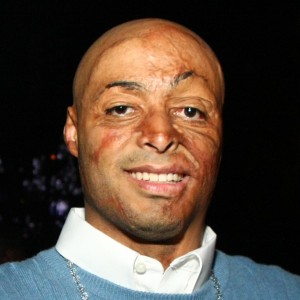
Experiencing a facial and/or scalp burn involves a long journey of healing that can result in physical deformities that affect facial expressions and sense of identity, including self-esteem.(1) In the affected areas, the hair follicles are often destroyed and replaced with scar tissue. Hair restoration, including follicular unit transplantation (FUT) and follicular unit extraction (FUE) can be used to restore hair to burn sites. One of the first hair restoration treatments was actually performed on burn victims in 1939.(2) However, hair restoration can be complicated as some burn victims may have limited hair available in the donor area to transplant, especially if the donor area was also burned.(3) Recently, a method called partial FUE has been discussed to address this issue.(3) Although this method is not in widespread use, it is an interesting concept that we may see more of in the future.
Partial FUE works by removing a partial follicular unit from the donor area so that both the donor site and the extracted partial follicle retain follicular stem cells.(3) Previous research has found that both the distal and proximal part of the hair follicle contains stem cells that can generate hair growth.(4,5) Retaining stem cells allows two hair follicles to be generated from one. This technique would allow the donor area to continue producing hair that could then be used for future treatments. Although this technique sounds promising, it can be challenging as scar tissue behaves differently from normal skin and the procedure is labour-intensive, taking up to a full day.(3) The authors also caution that more experience with partial FUE in burn victims is needed to better understand the limitations and future potential of this technique.(3) Until then, hair restoration using FUT or FUE may be possible.
Hair restoration can be particularly important for people who have experienced burns in order to improve their well-being and quality of life. If you are considering hair restoration to address hair loss from burns, please contact a hair transplant surgeon.
Article by: M.A. MacLeod, MSc., Mediprobe Research Inc.
References
- Rivlin E, Faragher EB. The psychological effects of sex, age at burn, stage of adolescence, intelligence, position and degree of burn in thermally injured adolescents: Part 2. Dev Neurorehabilitation. 2007 Jun;10(2):173–82.
- Jimenez F, Shiell RC. The Okuda papers: an extraordinary–but unfortunately unrecognized–piece of work that could have changed the history of hair transplantation. Exp Dermatol. 2015 Mar;24(3):185–6.
- Gho CG, Neumann HAM. Improved hair restoration method for burns. Burns J Int Soc Burn Inj. 2011 May;37(3):427–33.
- Kim JC, Choi YC. Regrowth of grafted human scalp hair after removal of the bulb. Dermatol Surg Off Publ Am Soc Dermatol Surg Al. 1995 Apr;21(4):312–3.
- Reynolds AJ, Lawrence C, Cserhalmi-Friedman PB, Christiano AM, Jahoda CAB. Trans-gender induction of hair follicles. Nature. 1999 Nov 4;402(6757):33–4.












